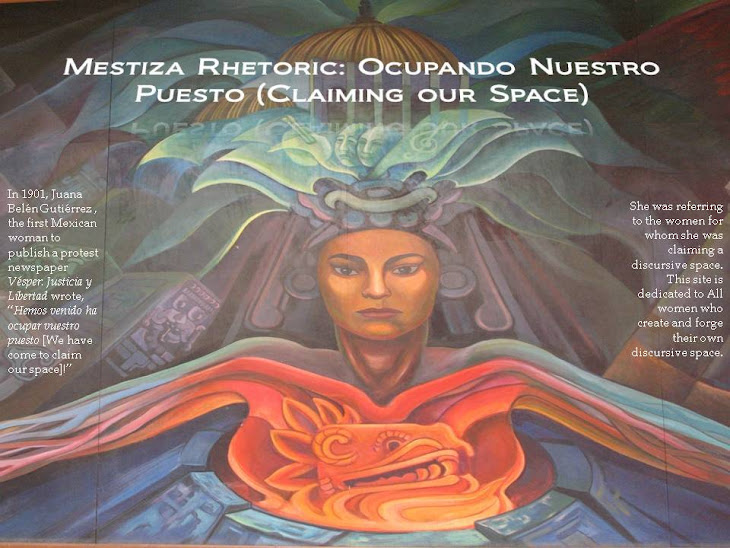


I have been away from blogging for sometime now. Life has taken its course. I started my post-doctoral position as research and writing specialist with the Office of Strategic Initiatives at UTEP, and then a month and a half later I defended my dissertation, Claiming the Discursive Self: The Rhetoric of Mexican Women Journalists, 1875-1924, this July. Since then, I have been just trying to catch up on either sleep or time to read.
Now that I've caught up on life I want to report on my Spring '09 semester. I taught one section of 3355 Workplace Writing and Organizational Communication. The course includes a major project at the end of the semester that asks students to chose a company and write a recommendation analysis/report for upper management. The first part of the course, however, delves into the theoretical bearings of rhetoric and examining businesses through a rhetorical lens. We read Community Action and Organization Change by Brenton Faber, which explains through ethnographic naratives how businesses are discursive constructions, and that in order to alter the direction or reality of a business, that it first must be done through discourse. One of Faber's main critiques in his first chapter deals with the disconnect between academe and university courses and the real business world. Although the students from the Fall '08 semester seemed to have learned a great deal from conducting the analysis/report on the companies, I thought I would take this critique to heart.
Every Christmas Even when I was growing up, my mom and dad would take all of the kids out caroling to families who were less fortunate than us. We would take them food and tidings of good joy. Christmas Eve of 2008 was no different. I stopped by at my parent's house, and they were gathering what they could for an not-for-profit organization they had heard about on a radio announcement that needed food and clothing for battered and homeless women. I loaded myself along with several hams, canned food items, and clothing to take to the shelter. We drove through the lonely streets of Segundo Barrio, an old neighborhood in which mostly Mexican-Americans live and thrive. We found the shelter called Dame la Mano at the very end of the block. There were other good semaritans there loading the front room up with foods, treats for the children, and need toiletries.
The shelter seemed pretty well taken care of by the community of El Paso. I asked for a flier or a brochure that I could have to take home and share with others. The Director, Rose Arellano, handed me a newsletter. A newletter is the first impression of an organization, telling the reader who they are, what their mission is, and what activities are taking place. It should be sharp, well-written, containing vibrant pictures and design to convey the life of an organization. But Dame la Mano's newsletter was anything but. It had mispellings throughout the public document. The paragraphs were not well written and had little relevance to the audience. It only told of the first days of the organization, which had been over 15 years ago.
I asked my students if they were interested in substituting the major research project with a project that would not only get them involved in their community, but also teach them about how discourse shapes and can have transformative powers within organizations. On Cesar Chavez Day, we visited Dame la Mano, and met with the directors of the organization. My students asked what they would like to see in their brochures. What information would be helpful? In what language should they be written? What stories would you like to see in newsletter? These questions gave the students an idea of how to approach their projects.
Groups of students completed their brochures, newsletters, etc. and presented them to Dame la Mano on the last day of class. Beltran Printing here in El Paso donated over 500 brochures and newsletters to the organization. Dame la Mano was extremely appreciative of the class's efforts. This past May, Dame la Mano was invited to the White House to talk about their efforts to help people along the border with their non-profit organization. They were able pass out the brochures and newletters that my class had created to bring more funding and recognition to their work.
¡Esto es el trabajo de la mujer Latina!












